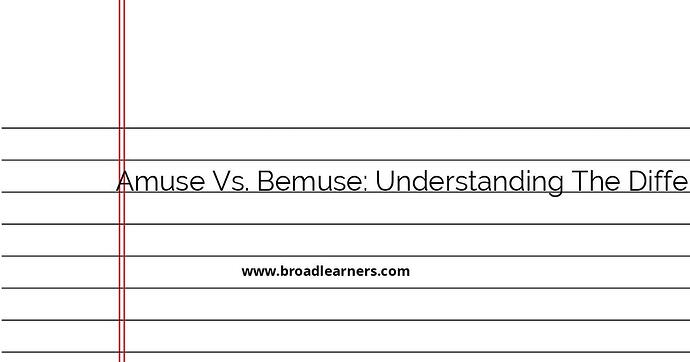Understanding the difference between ‘amuse’ and ‘bemuse’ is essential for effective communication, as they are often confused in writing and speech despite having distinct meanings.
- Amuse
- The verb ‘amuse’ refers to causing someone to be entertained, to enjoy something, or to find something funny or interesting. It implies a positive engagement with humor or thought-provoking content.
- During the comedy show, the comedian's jokes amused the audience.
- The magician’s tricks amused the children at the party.
- Bemuse
- The verb ‘bemuse’ means to cause someone to be confused or puzzled. It implies a state of bewilderment or being in a daze, often due to complexity or unexpectedness.
- The complex instructions bemused the employees during the training session.
- The abstract painting bemused the art critics at the exhibition.
Examples of ‘Amuse’ in Sentences:
Here, ‘amused’ indicates that the audience found the jokes entertaining and funny.
In this context, ‘amused’ suggests that the children found the tricks entertaining and delightful.
Examples of ‘Bemuse’ in Sentences:
In this instance, ‘bemused’ indicates that the employees were puzzled or confused by the complexity of the instructions.
Here ‘bemused’ suggests that the art critics were left confused or bewildered by the abstract nature of the painting.
It is essential for language practitioners to distinguish between ‘amuse’ and ‘bemuse,’ as using the incorrect term could lead to misunderstandings in communication. ‘Amuse’ is associated with humorous or pleasurable entertainment, while ‘bemuse’ corresponds to confusion or puzzlement. Each word enriches the English language by providing distinct descriptive possibilities.
Did I miss anything? Respond below
